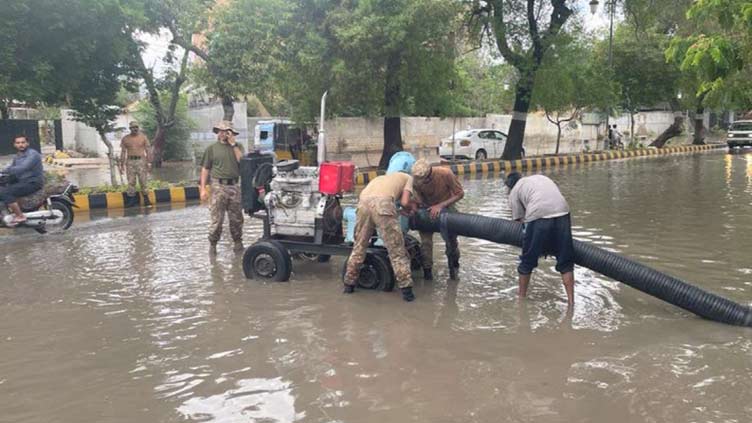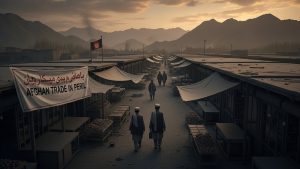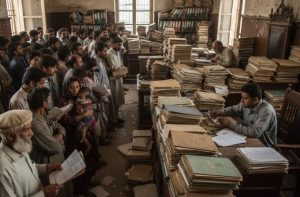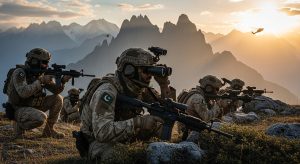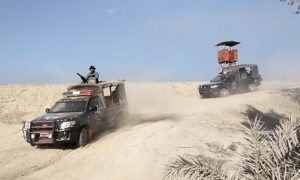There’s a different kind of quiet that settles over Interior Sindh when the monsoon clouds gather heavily in the sky. It’s not the silence of peace, but of waiting—a silence thick with memory and anticipation. Generations here have learned to live with the river, knowing it as both a lifeline and a threat.
This year, as relentless rains sweep across Pakistan, that quiet feels heavier than usual. The rivers are rising—not only from the downpour, but also from the added strain of what many here call “water aggression” from across the border in India. Villages and towns watch anxiously, eyes fixed on the mighty waterways that can give life one day and take it back the next.
Flood anxiety is nothing new in Sindh. It’s etched into stories of the past, in memories of families forced to leave homes, and in fields lost to swollen waters. But this year feels different. The fear is there, yes—but so is a quiet determination. Instead of panic, there’s preparation. Instead of helpless waiting, there’s a steady rhythm of readiness.
And in this landscape of uncertainty, the Pakistan Army and Pakistan Rangers Sindh have become a reassuring presence. Army units, equipped with boats and supplies, are already in the high-risk areas. Their officers and soldiers stand ready to carry out rescues, provide relief, and face down whatever the floods may bring. For the people, their deployment isn’t just strategy—it’s a promise. A promise that when the waters rise, they won’t face it alone.
The Rangers, too, are on the frontlines in their own way. They’ve taken on the vital task of protecting irrigation teams working day and night to strengthen embankments and repair vulnerable points. More patrols and new pickets along the riverbanks are making sure those defences hold. Beyond that, they’ve stepped directly into the lives of ordinary people—helping families evacuate from katcha (riverine) areas, easing a painful but necessary move. Perhaps most warmly welcomed are the free medical camps set up by the Rangers alongside the civil administration, giving people access to healthcare at a time when it matters most. These acts of service are not seen as duty alone—the people of Sindh see them as acts of care.
All of this—the patrols, the supplies, the medical camps—paints the picture of a province preparing. But preparation doesn’t stop with the authorities. It reaches our own homes, our own families. The bigger question is: are we ready? Have we packed an emergency bag? Have we talked to our families about a plan? Checked if an elderly neighbour might need help? These are not questions for tomorrow. They are for right now.
A Personal Plan: What Every Family Can Do
In Sindh right now, every family knows that survival isn’t about fear—it’s about preparation. The first thing is simple: stay informed. Trust the news that matters and listen to what the authorities are saying, because those instructions are built on hard-earned experience. Keep a bag ready, something waterproof, with food, clean water, medicine, a torch, and batteries—small things that can feel like lifelines when the moment comes. And never, ever underestimate the water.
What looks calm on the surface can hide a dangerous pull or broken debris waiting beneath. If the flood enters your home, cut the power at the main switch without delay; a single quick action can prevent a tragedy. But perhaps most importantly, don’t think only of yourself. Knock on a neighbour’s door, check on the old man living alone, or the family down the street—because when a community stands together, it becomes unbreakable. And if the call to evacuate comes, don’t hesitate. You can rebuild a house, but you can’t rebuild a life. That’s the truth echoing across Sindh right now: this is not helplessness, it’s vigilance. Side by side with the soldiers and Rangers who are standing guard, ordinary families are turning quiet caution into courage. Out here, between the power of the river and the will of the people, what flows strongest is not fear—it’s hope.

